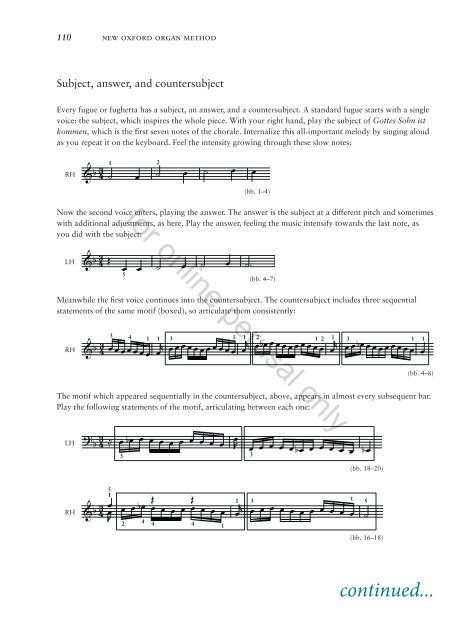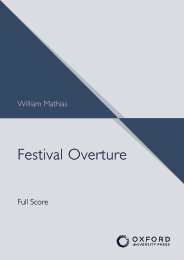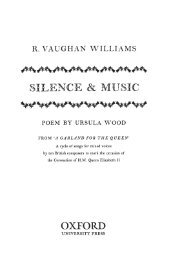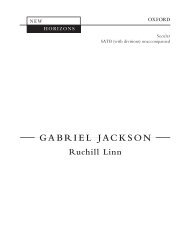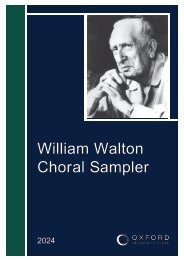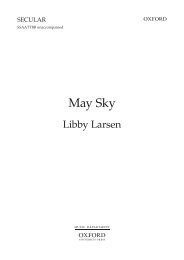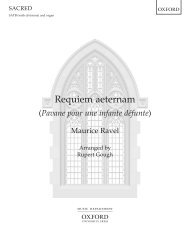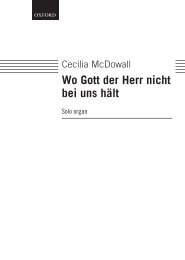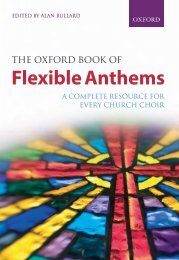New Oxford Organ Method
A single piece of repertoire is the primary focus for each chapter, with preparatory exercises providing the necessary technical work building towards the piece. Each lesson covers four main topics, which are systematically developed: practice methods, registration, fingering and pedalling, and historically-informed interpretation. The method is for keyboard players of any age who are establishing first steps at the organ with or without a teacher. It will also serve more experienced organists who want to improve their technique.
A single piece of repertoire is the primary focus for each chapter, with preparatory exercises providing the necessary technical work building towards the piece. Each lesson covers four main topics, which are systematically developed: practice methods, registration, fingering and pedalling, and historically-informed interpretation. The method is for keyboard players of any age who are establishing first steps at the organ with or without a teacher. It will also serve more experienced organists who want to improve their technique.
- No tags were found...
Create successful ePaper yourself
Turn your PDF publications into a flip-book with our unique Google optimized e-Paper software.
110 new oxford organ method<br />
Subject, answer, and countersubject<br />
Every fugue or fughetta has a subject, an answer, and a countersubject. A standard fugue starts with a single<br />
voice: the subject, which inspires the whole piece. With your right hand, play the subject of Gottes Sohn ist<br />
kommen, which is the first seven notes of the chorale. Internalize this all-important melody by singing aloud<br />
as you repeat it on the keyboard. Feel the intensity growing through these slow notes:<br />
RH<br />
3<br />
& b 1 2<br />
4 ˙ œ ˙ œ ˙ œ œ<br />
(bb. 1–4)<br />
Now the second voice enters, playing the answer. The answer is the subject at a different pitch and sometimes<br />
with additional adjustments, as here. Play the answer, feeling the music intensify towards the last note, as<br />
you did with the subject:<br />
for online perusal only<br />
LH<br />
3<br />
&b 4<br />
Œ<br />
œ œ ˙ œ ˙ œ ˙<br />
5<br />
(bb. 4–7)<br />
Meanwhile the first voice continues into the countersubject. The countersubject includes three sequential<br />
statements of the same motif (boxed), so articulate them consistently:<br />
RH<br />
3<br />
3<br />
& b 4 1 1 3 1 1 2 1 2 1 3 1 1<br />
4 œœœœœœœ œ r œœœœœœœœœœœ œ r œbœœœœœœœœœœ œ r œ œbœœœœœœœœœ œ<br />
(bb. 4–8)<br />
The motif which appeared sequentially in the countersubject, above, appears in almost every subsequent bar.<br />
Play the following statements of the motif, articulating between each one:<br />
LH<br />
? 3 b 4 ≈ œ bœ<br />
œ œ œ œ œ œ œ œ œ œ R œ œ œ œ œbœ<br />
œ œ œ œ œ bœ<br />
3 3<br />
(bb. 18–20)<br />
RH<br />
5<br />
1<br />
Œ<br />
3<br />
& b 1 3 1 5<br />
4 œ œ œ bœ<br />
œ œ œ œ Œ œ œ œ œ<br />
R<br />
œ r œ œ œ œ œ œ œ œ œ œ œ ˙<br />
2 4 4 4 1<br />
(bb. 16–18)<br />
continued...


